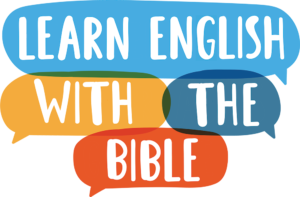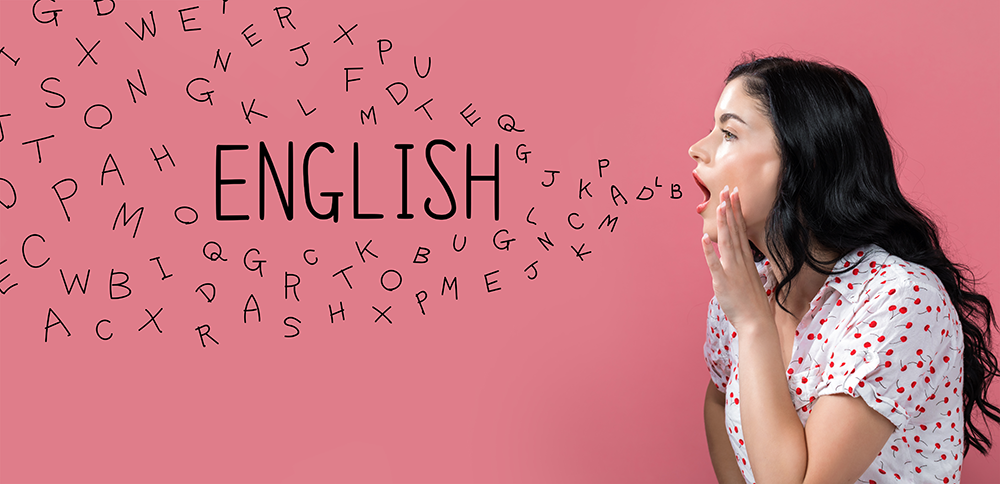Linking words together is an important part of any language. It is the same with American English. Linking words together helps us speak more smoothly and easily.
In a different post, we’ve already talked about linking. We learned how to link vowel sounds together. You can read that post here. In this post, we’ll talk about how to link consonant sounds together.
Three Ways to Link Consonant Sounds
There are three ways to link consonant sounds:
- two of the same consonant sounds
- two different consonant sounds
- a stop consonant with another consonant
Let’s look more closely at these. We’ll use John 5:1-18 to find examples. This is the story of when Jesus healed the sick man by the pool.
1. Linking Two of the Same Consonant Sounds
The easiest way to link consonants is to combine two similar consonant sounds. Look at this example:
In the city near the sheep gate was a pool with five porches, and its name in Hebrew was Bethzatha. (v. 2)
The word “Hebrew” ends with a “w,” and the word “was” begins with a “w.” We don’t pronounce the “w” twice, with a pause in the middle. We only say it once. Follow along with the audio, slowly at first.
Hebre(w-w)as
Here’s another example:
When Jesus saw the man and realized that he had been crippled for a long time, he asked him, “Do you want to be healed?” (v. 6)
The name “Jesus” ends with an “s,” and the word “saw” begins with an “s.” We will combine these “s” sounds into one sound that might be a little longer than a normal “s” sound. There is no other pause between these two words. Listen and repeat:
Jesu(s-s)aw
Linking two similar sounds together is the easiest way to link consonants together to make your speech sound smoother.
2. Linking Two Different Consonant Sounds
This happens All The Time in English! You probably know that many English words contain more consonants than vowels. If these consonants are at the end of a word, and the next word begins with a consonant, they are linked together.
This can be difficult for English learners. Sometimes all these linked words sound like one big word. It can be hard to understand the individual words. We won’t be able to look at all the possible combinations, but let’s start with a few examples of linking words together. Then, we’ll give you some tips to help you when you speak.
Listen to this verse, and notice how the speaker combines the sounds of the letters in orange:
Later, Jesus went to Jerusalem for another Jewish festival. (v. 1)
Learning how to do this kind of linking will take practice. First, make sure you can pronounce each sound individually. “Jerusalem-m-m, f-f-for.” Pay close attention to your mouth position as you say each letter. Second, try combining the sounds slowly, exaggerating your mouth movements.
Notice what parts of your mouth change position, and what parts stay the same. For example, with “m” and “f,” your lips move quite a bit, but your tongue and teeth stay the same. Try saying the sounds a little more quickly, then say both words together.
How did you do? Practice with the other letter pairs in this verse – s and w, r and j, sh and f.
Now let’s look at the third kind of consonant to consonant linking – how to link words with a stop consonant.
3. Linking a Stop Consonant With Another Consonant
I’ve left this one for last because it is perhaps more difficult to learn. Stop consonants are letters that are pronounced in two steps. First, you stop the air, then you release the air. There are six stop consonants in English: b, p, t, d, g, and k. For more information about stop consonants, you can check out this page where we talk about stop consonants in much more detail.
When a word ends with a stop consonant, and the next word begins with another consonant, English speakers usually don’t release the air of the stop consonant. They just move quickly into the next sound.
Here is an example from our Bible passage:
In the city near the sheep gate was a pool with five porches… (v. 2a)
Sheep| gate
Normally, when we say the “p” sound, we stop the air with our lips, then open our lips to release a puff of air that makes the sound. However, since this “p” sound comes at the end of a word, and the next letter is a consonant, we close our lips for the “p” and move quickly into the “g” sound without releasing the air for the “p.”
More About Stop Consonants
This process of “stopping” the air for a stop consonant is very common in English. It even has a name – “glottal stop.” If you are not familiar with this, just hold your breath for a few seconds. This is exactly the same as a glottal stop. Notice what happens in your throat when you hold your breath. Try to get the same feeling when you pronounce “sheep gate.” Click here to read more about glottal stops.
Linking Words Together - Time to Practice
Here are a few more examples from our Bible passage. Practice linking the consonant sounds together in each of the three ways we talked about.
1. Two of the Same Consonant Sound
Later, Jesus met the man in the temple and told him, “You are now well…” (v. 14)
But Jesus said, “My Father has never stopped working, and this is why I keep on working.” (v. 17)
Two of the Same Consonant Sound
2. Two Different Consonant Sounds
When the Jewish leaders saw the man carrying his mat… (v. 10)
(the first “s” is pronounced as a “z,” and the second is pronounced as “s.” They are two different sounds, made by the same letter.)
The man left and told the leaders that Jesus was the one who had healed him. (v. 15)
Two Different Consonant Sounds
3. Stop Consonant with Another Consonant
…”Do you want to be healed?” (v. 6b)
(the two “t’s” are pronounced differently – one is a stop consonant, and the other is pronounced as a regular “t.”
First, he had broken the law of the Sabbath… (v. 18)
Stop Consonant With Another Consonant
Listen to the Whole Passage
Finally, let’s listen to the whole passage read for you at normal speed. Listen carefully! Can you hear all the ways that consonants at the end of a word link to the next word?
Jesus Heals a Sick Man – John 5:1-18 CEV
Practice Makes Perfect!
Whenever you take time to practice your English listening, practice your speaking, too. Repeat words and phrases as you hear them, and listen carefully how words are linked together. This will help you be understood when you speak, and understand more of what you hear!
I hope this post was helpful to you. Leave a comment below and tell me about your experience with linking consonants together in English. See you next time!


